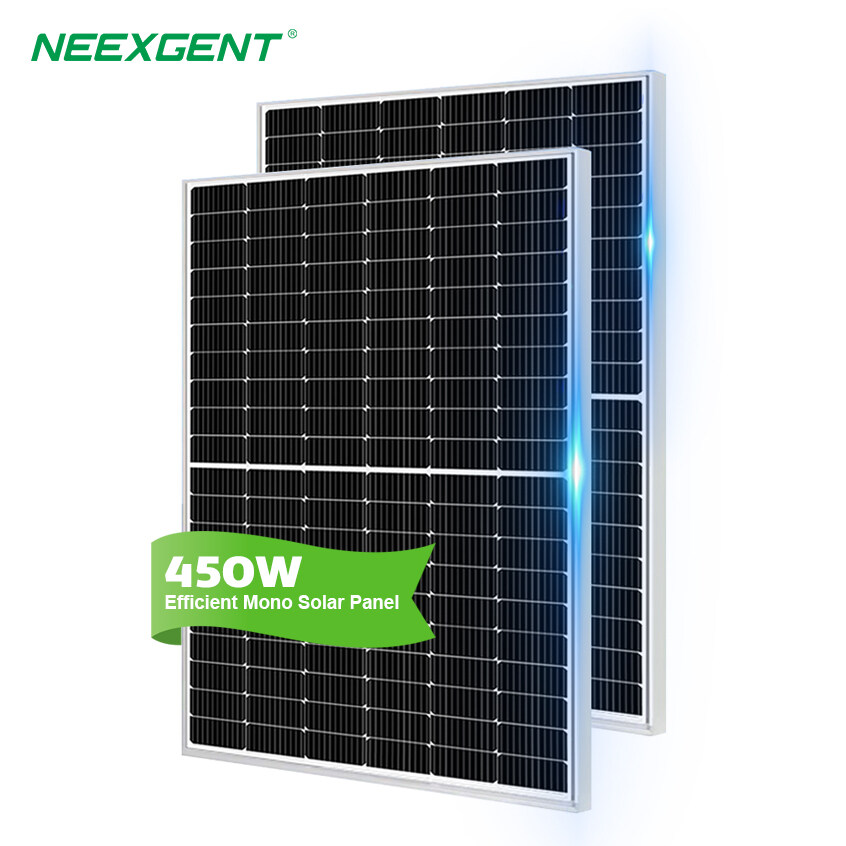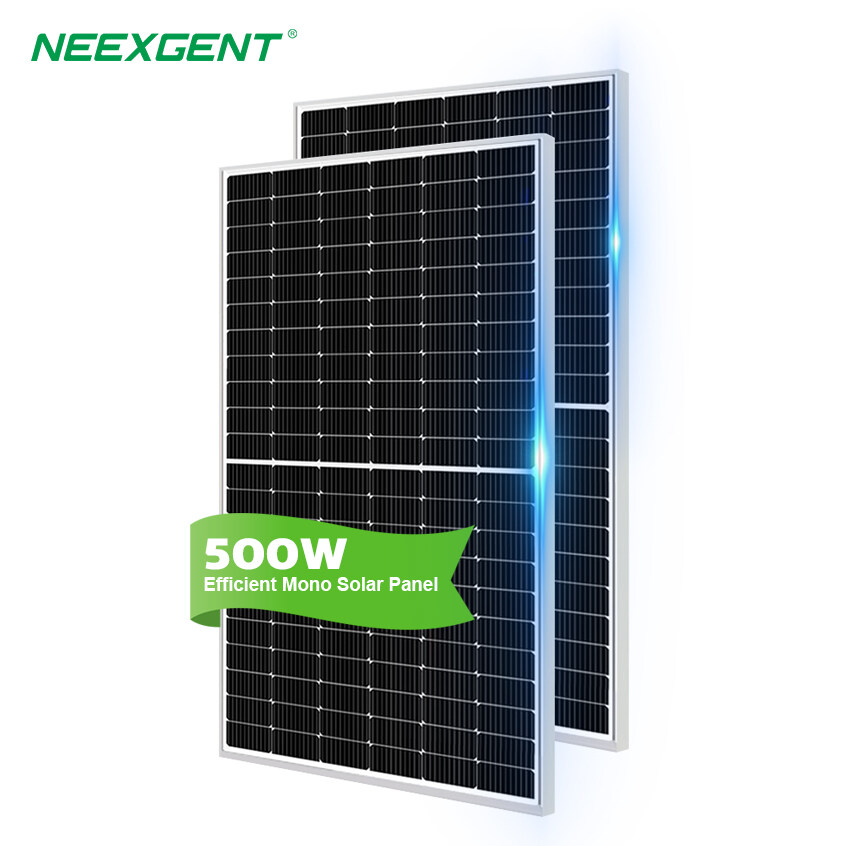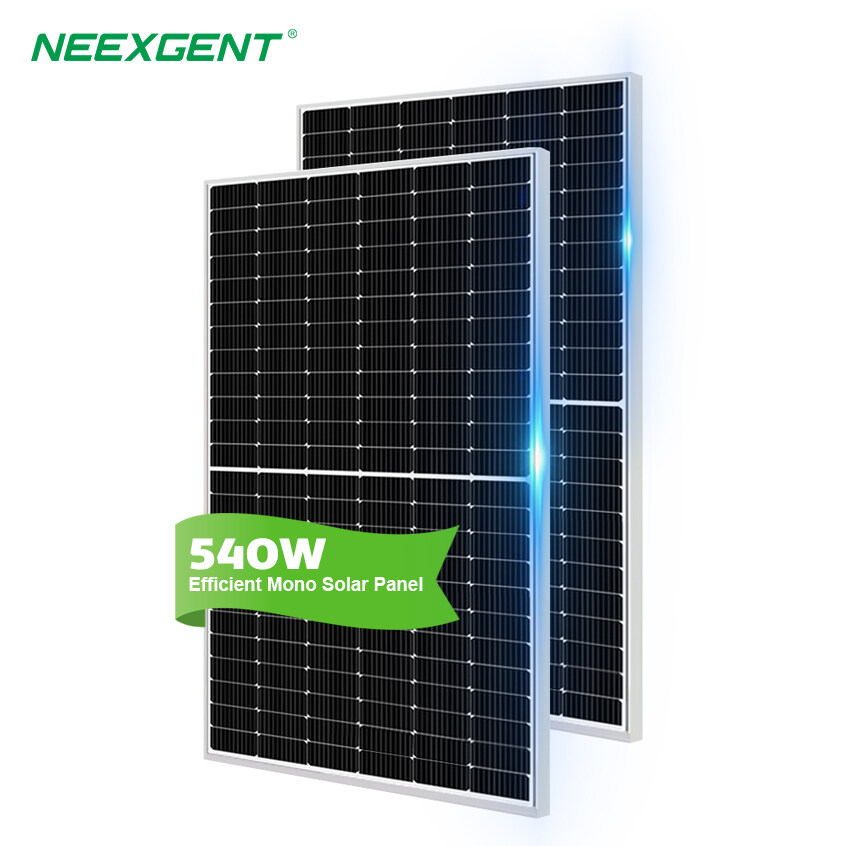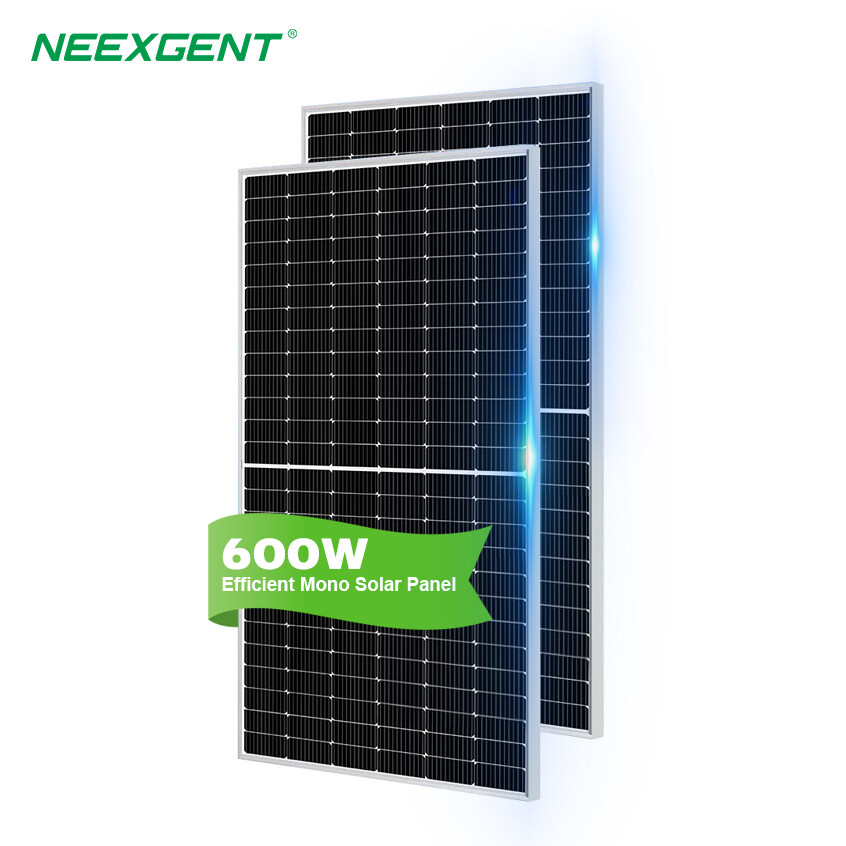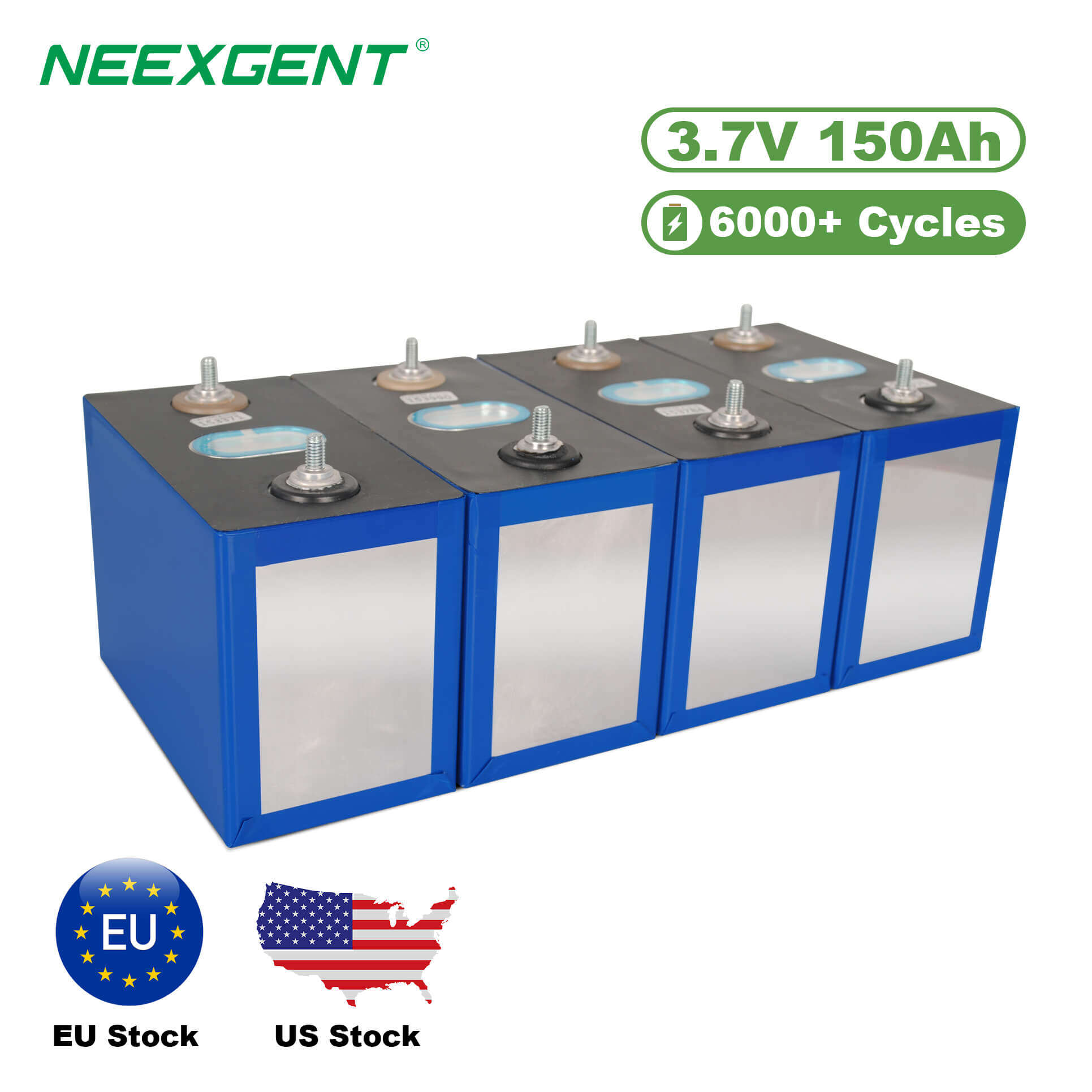Contents:
Cleaning solar panels regularly is crucial to maintaining optimal energy output, especially in regions prone to dust accumulation, pollen, or other environmental particulates. Manual cleaning methods can be labor-intensive, risky on large installations, and often water-intensive. Automated cleaning robots have emerged as an efficient, safe, and environmentally friendly alternative. In this article, we’ll explore key considerations when choosing a solar panel cleaning robot, review some of the top solutions on the market—including the industry-leading NXR-Ⅳ by Neexgent—and provide guidance for PV system operators seeking to maximize their return on investment.
The Impact of Soiling on Solar Panel Performance
Solar panels accumulate dust, bird droppings, pollen, and other debris—collectively referred to as “soiling”—which can reduce conversion efficiency by up to 30% in high-dust or desert environments. Researchers at the University of Houston estimate that the average soiling loss worldwide was at least 3–4% in 2018, with localized losses far higher in arid regions. Even a 1% loss can translate to thousands of dollars of lost energy revenue annually for utility-scale installations. Therefore, systematic cleaning is not merely cosmetic but economically imperative.
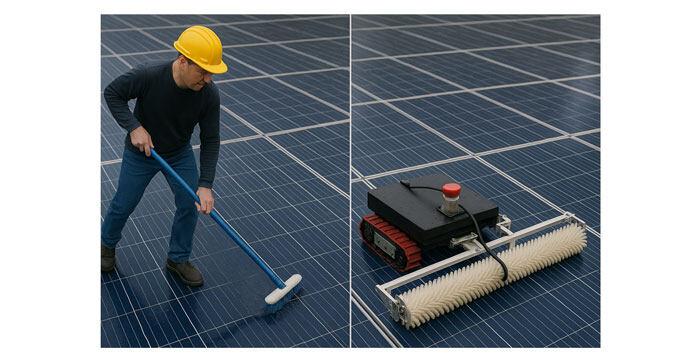
Manual vs. Automated Cleaning: Key Trade-Offs
Traditional cleaning methods—using brushes, squeegees, or pressure washers—require significant labor and can pose safety hazards when crews work at height. Manual approaches also often consume tens of liters of potable water per panel, which is unsustainable in water-scarce regions. In contrast, robotic cleaning systems:
-
Operate autonomously or remotely, reducing injury risk.
-
Optimize water usage (including dry-brush systems).
-
Clean during off-peak hours without interrupting operations.
-
Scale easily across large farms without proportional increases in labor costs.
These benefits drive rapid adoption of automated cleaning solutions worldwide.
Market Trends and Growth Projections
The global automated solar panel cleaning market was valued at approximately USD 1 billion in 2024 and is expected to grow at a compound annual growth rate (CAGR) of 7.2% through 2034, driven by rising solar installations and stricter efficiency regulations.Another analysis pegs the market at USD 134.3 million in 2024, with a projected CAGR of 10.8% until 2032, reflecting variations in market definitions and survey scopes.Regardless of the exact figures, consensus points to a robust, double-digit growth trajectory as operators seek cost-effective maintenance strategies.
Criteria for Evaluating Cleaning Robots
When assessing robotic cleaning solutions, consider:
1. Cleaning Method
- Dry brushing: minimizes water use but may struggle with stubborn dirt.
- Wet cleaning: uses demineralized or recycled water for more thorough removal.
2. Mobility Platform
- Crawler robots: traverse panel arrays on tracks—ideal for ground-mount farms.
- Aerial or drone-based: fly over installations, reducing footprint but may have payload limits.
3. Control and Automation
- Fully autonomous: follow pre-programmed routes with minimal human oversight.
- Remote-controlled: allow operators to steer via joystick or touchscreen.
4. Battery Life and Power Supply
- On-board lithium-ion batteries or connection to grid power can affect runtime and recharge cycles.
5. Adaptability and Scalability
- Ability to handle panels of varying tilt angles, gaps, and layouts.
6. Maintenance and Support
- Warranty terms, spare-parts availability, and after-sales service networks.
Top Solar Panel Cleaning Robots
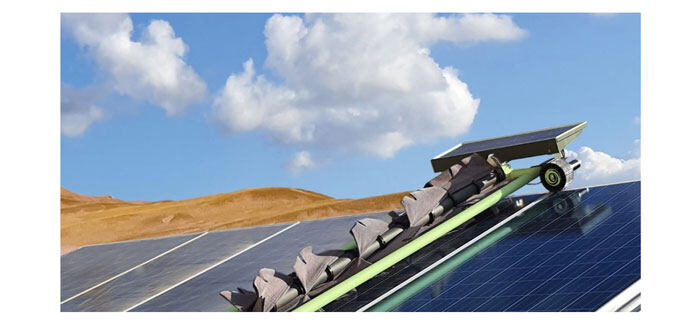
Ecoppia’s Autonomous Dry-Brush System
Ecoppia is a pioneer in waterless robotic cleaning, deploying AI-driven, microfiber brushes and controlled airflow to remove dust. Its technology is widely used in utility-scale farms across Asia and the Americas, with long-term field data demonstrating minimal efficiency drop even in harsh environments.
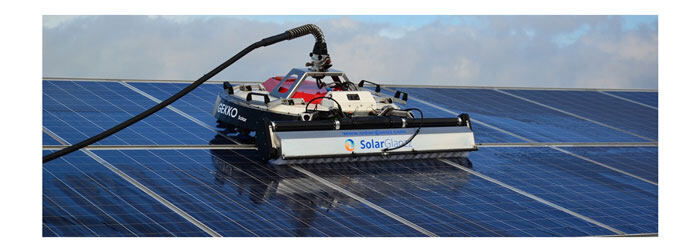
GEKKO Solar Cleaning Robot
Manufactured by ChemiTek, the GEKKO Solar unit employs rotating brushes under constant pressure, delivering both dry and wet cleaning options. It integrates seamlessly with mobile work platforms, allowing operators to lift the robot to rooftop panels and control cleaning via radio joystick. An independent support wagon can supply water and power when needed, making it suitable for small farms with narrow panel arrays.
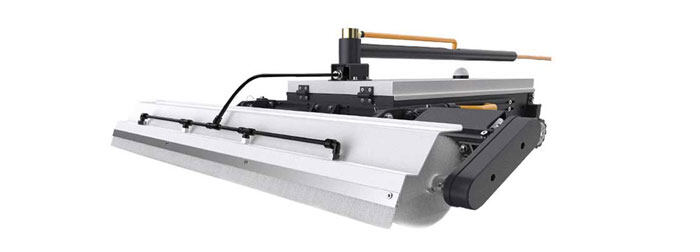
Foxtech Sweeper Series
Foxtech’s Sweeper-66 and Sweeper-110 crawler-type robots are designed for large photovoltaic systems. They offer fully remote cleaning with optional water-jet attachments. The modular design lets operators swap brush heads and adjust water flow, optimizing performance across diverse climatic conditions.
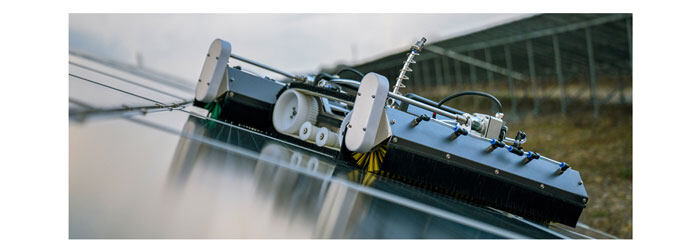
SolarCleano Mini Robot
SolarCleano’s Mini model boasts a 20% higher cleaning capacity compared to market peers. Its compact form factor and one-year warranty, backed by dedicated after-sales service, make it an attractive choice for mid-scale commercial rooftops. The robot adapts dynamically to weather and panel conditions, ensuring consistent results.
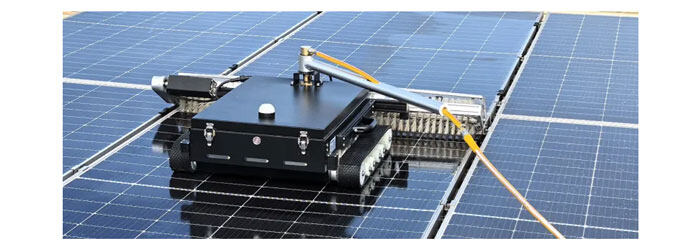
Neexgent’s NXR-Ⅳ
Neexgent’s NXR-Ⅳ is a standout in the automated cleaning segment, engineered specifically for challenging rooftop and solar-farm environments. Key features include:
-
6063 Aviation Aluminum Alloy Body
Lightweight yet robust; designed to traverse panels without causing scratches or damage.
-
Crawler Design with All-Terrain Rubber Tracks
Ensures stable operation across varied panel gaps (spans up to 10 cm and heights up to 5 cm) without manual guide rails.
-
Dual-Mode Cleaning (Dry and Wet)
Equipped with high-wear industrial nylon brushes and a demineralized water spray system for thorough cleaning cycles.
-
Remote Control and PLC Automation
Operators use a joystick-based radio control for precise navigation. Automated PLC sequences enable repeatable cleaning patterns with minimal human intervention.
-
High-Capacity Lithium Battery Pack
24 V, 26 Ah maintenance-free gel batteries deliver up to 4–5 hours of continuous operation per charge, suitable for multi-acre installations.
-
Support Wagon Integration
For remote sites, an optional wagon supplies water, power, and pressurized air, allowing the NXR-Ⅳ to function independently of fixed infrastructure.
-
Extended Control Range
Dual-hand remote offers a control radius exceeding 150 meters—ideal for expansive ground-mount farms.
These attributes make the NXR-Ⅳ a versatile solution for both utility-scale and commercial rooftop applications. Its lightweight build and adaptability ensure minimal downtime, while intelligent control systems optimize cleaning efficacy.
Comparative Analysis
| Feature |
Ecoppia Dry-Brush |
GEKKO Solar |
Foxtech Sweeper-110 |
SolarCleano Mini |
Neexgent NXR-Ⅳ |
| Cleaning Method |
Dry only |
Dry/Wet |
Dry/Wet |
Dry/Wet |
Dry/Wet |
| Mobility |
Railless crawler |
Mobile platform |
Crawler |
Compact crawler |
Crawler |
| Control |
Autonomous |
Remote-controlled |
Remote-controlled |
Autonomous |
Remote/PLC |
| Battery Runtime |
6–8 hours |
4–6 hours |
5 hours |
3–4 hours |
4–5 hours |
| Water Use |
None |
Low |
Adjustable |
Adjustable |
Demineralized |
| Support Infrastructure |
Requires docking |
Support wagon |
On-board tank |
On-board tank |
Support wagon |
Choosing the Right Robot
When selecting a robotic cleaner, PV operators should align features with site characteristics:
-
Rooftop Installations: Prioritize compact, lightweight robots (e.g., NXR-Ⅳ, SolarCleano Mini) that integrate with existing access platforms.
-
Ground-Mount Farms: Crawler robots with long-range remote control (e.g., Foxtech Sweeper, Neexgent NXR-Ⅳ) excel across expansive arrays.
-
Water Scarcity Zones: Dry-brush systems (e.g., Ecoppia) eliminate water logistics but may require periodic wet cleaning for stubborn grime.
-
Budget Constraints: Consider total cost of ownership, including maintenance, power, and consumables. Entry-level models offer lower upfront costs but may sacrifice autonomy or throughput.
Conclusion
Automated solar panel cleaning robots represent a strategic investment for PV asset owners seeking to safeguard energy yield, reduce maintenance costs, and minimize environmental impact. With a forecasted market value exceeding USD 1 billion and double-digit growth rates, this technology is maturing rapidly. Solutions like Ecoppia’s dry-brush robots, GEKKO Solar’s versatile platforms, Foxtech’s robust Sweepers, SolarCleano’s high-capacity Mini, and Neexgent’s feature-rich NXR-Ⅳ cater to diverse operational needs. By carefully evaluating cleaning methods, mobility, automation level, and support requirements, solar stakeholders can select the optimal robot to maximize clean-energy returns.
FAQs
How often should solar panels be cleaned using a robot? +
The frequency of cleaning depends on the local environment. In dusty or polluted areas, cleaning may be needed weekly or biweekly. In regions with less dust or more rainfall, monthly or seasonal cleaning may suffice. Robotic systems can be programmed for regular cleaning without manual intervention, ensuring consistent performance.
Do solar panel cleaning robots damage the panels? +
High-quality cleaning robots, like the Neexgent NXR-Ⅳ, are specifically designed to protect the surface of solar panels. They use soft brushes, controlled pressure, and non-abrasive wheels or tracks to avoid scratching or damaging the glass.
Can solar panel cleaning robots work on tilted or uneven installations? +
Yes, most modern cleaning robots are designed to handle different tilt angles and slight surface irregularities. The Neexgent NXR-Ⅳ, for example, uses a crawler system that adapts to panel gaps and height differences, making it suitable for both rooftop and ground-mount installations.
Is water necessary for robotic solar panel cleaning? +
Not always. Some robots use dry-brush systems to clean without water, ideal for regions with water scarcity. Others, like the NXR-Ⅳ, offer both wet and dry cleaning options using demineralized water for a deeper clean when needed.
How much maintenance does a solar panel cleaning robot require? +
Maintenance is generally low but important. Regular checks of brushes, wheels/tracks, batteries, and water systems (if applicable) ensure reliable operation. Premium robots like the NXR-Ⅳ are built with durable components to minimize maintenance needs over time.

